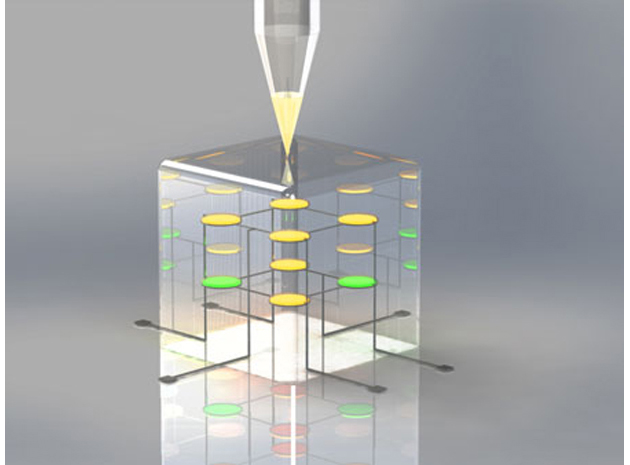
You can use 3D printing to make a handful of electronics, such as antennas and batteries, but LEDs and semiconductors have been elusive; you usually need some other manufacturing technique to make them work, which limits what they can do and where they’ll fit. A team of Princeton researchers recently solved this problem, however. They’ve found a way to make quantum dot LEDs (and thus semiconductors) using only a 3D printer. The scientists choose printable electrodes, polymers and semiconductors, which are dissolved in solvents to keep them from damaging underlying layers during the printing process; after that, the team uses design software to print the materials in interweaving patterns. In this case, the result is a tiny LED that you could print on to (or into) many objects, including those with curved surfaces.
via Engadget
Image: McAlpine Group





